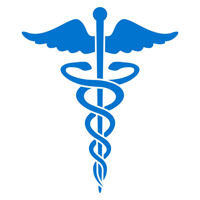 A new study led by researchers at the University of Pennsylvania in Philadelphia tracks the progress of students from underrepresented groups in medical school enrollments. The study found that the number of applicants and matriculants from underrepresented groups increased at a greater rate than for applicants and enrollments as a whole. However, the study found that from 2002 to 2017, Black applicants and matriculants of both sexes were still underrepresented. Furthermore, there was a significant trend toward decreased representation for Black female applicants from 2002 to 2012.
A new study led by researchers at the University of Pennsylvania in Philadelphia tracks the progress of students from underrepresented groups in medical school enrollments. The study found that the number of applicants and matriculants from underrepresented groups increased at a greater rate than for applicants and enrollments as a whole. However, the study found that from 2002 to 2017, Black applicants and matriculants of both sexes were still underrepresented. Furthermore, there was a significant trend toward decreased representation for Black female applicants from 2002 to 2012.
The authors also examine the diversity in medical school applicants and matriculants in the 50 states.
The authors conclude that “Black students remain underrepresented among medical school matriculants compared with the U.S. population. This underrepresentation has not changed significantly since the institution of the Liaison Committee of Medical Education diversity accreditation guidelines in 2009. This study’s findings suggest a need for both the development and the evaluation of more robust policies and programs to create a physician workforce that is demographically representative of the U.S. population.”












We can safely predict that the black physician workforce will never match the percentage of blacks in the population.
There are many barriers to graduation from a medical school. The teaching of medical subjects is substandard and unfriendly, because professors have an elitist, sink-or-swim mentality, and force-feed vast amounts of poorly organized material to their students without adequate explanations or interpretations. On-the-job training in hospitals is a nightmarish experience because of the frenetic schedule and sleep deprivation. No professional should be asked to put up with such abusive treatment.
Unless these practices are reformed, don’t expect to see a big increase in the number of black doctors.